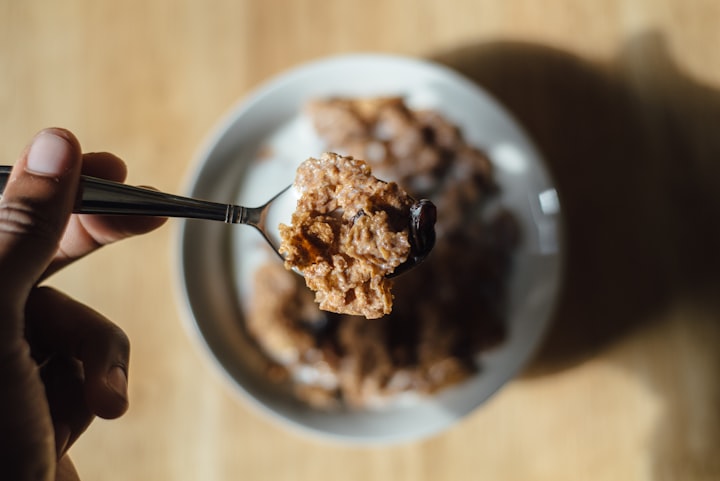Types of Fibre for Your Hormones
Are you missing out?

I talk about digestive health an incredible amount in my practice – it’s actually an element I focus on as part of my care pathway for optimal reproductive health!
When the digestive system is functioning well, we are able to clear hormone breakdown products effectively, can absorb the nutrients we need to be well, and are having comfy bowel movements on a regular basis. We love the digestive system!
A huge element to digestive health, and as a result, hormones, is fibre. Now when people come into my office with hormone and digestive health concerns, and I mention fibre, they almost always point to their vegetables and salads and call it done. “But wait,” I usually say, “there’s more!”
It would make sense for us to really understand what fibre is before we talk about the different types, and how they can be strategic for hormone health, so let’s start there.
Carbohydrates can be classified under two big categories: simple and complex.
Simple carbohydrates are those with a small number of molecules. Monosaccharides (one molecule) include glucose, fructose and galactose. Disaccharides (two molecules) include sucrose, lactose and maltose. Oligosaccharides contain between three and ten molecules, and are essentially chains of glucose molecules or some combinations of the others. Foods such as dairy, fruit and honey contain these smaller saccharide chains. Beyond ten molecules, we move into polysaccharide territory.
Complex carbohydrates are where we start to see these polysaccharides take the stage. Large chains of glucose can be classified into starches or fibres.
The human body contains a variety of enzymes to break down starches into its building block of glucose – from here, it can enter the bloodstream and travel to other tissues where it is needed for energy production! These enzymes are present in saliva as soon as we start chewing, and are present in other forms in the intestines as well.
Fibre, on the other hand, doesn’t really digest. Humans don’t have the enzymes required to break fibre down into glucose, like cows, horses or other primarily plant-eating mammals do. But that doesn’t mean we don’t get a benefit out of them! Instead of providing energy, fibre can be fermented in the gut to feed the microbiome, and provides resistance for digestive muscles to push off of.
Fibre has its own two categories, and each one has a unique role to play in hormone health.
Insoluble fibre is like roughage or bulk in the digestive system. It stimulates digestive muscles to push digested food, and later stool, forward via peristalsis so it can be removed from the body. This stimulation appears to be related to both volume-stimulated nerves in the digestive system, and minor irritation of the tissues to encourage forward motion – in almost a similar way to prostaglandins “irritating” the uterus so it will contract and release the lining during menstruation!
This type of fibre is important to keep our bowels “regular” – stimulant fibres can treat and prevent constipation, and because we clear hormone breakdown products through the digestive system bowel movements are critical to getting these detox products out. This is the type of fibre people are consuming when they are eating leafy green salads, vegetables and fruits. It’s also why when we eat these foods, we might notice they don’t look digested in our stool – we don’t have the enzymes to break them down, so they come out the way they went in. Hi, corn!
The other type of fibre we don’t talk about enough is soluble fibre! It is a water-absorbing or gel-forming fibre, meaning it soaks up water like a sponge and gets “goopy”. In the digestive system, soluble fibre can attract water into the bowels so that stool is softer in consistency while still encouraged to keep moving forward.
With regards to hormones, this type of fibre is important for the transport of glucose and cholesterol, where excess amounts from the bloodstream can be absorbed and carried out. By doing this, blood sugar levels remain within a normal range for a longer period of time and cholesterol levels are reduced to healthy levels.
Well-controlled blood sugar avoids large and repetitive spikes in insulin, which may gradually contribute to insulin resistance and the risk of diabetes over time. We like insulin! It’s the hormone that gets energy into our tissues!
Cholesterol is the building block of our hormones, and we can make it in our liver without actually eating it – the fats we consume are converted into cholesterol, which goes on to produce hormones, cell walls and tissues. High levels of cholesterol can contribute to plaque development in the cardiovascular system, and increase the risk of heart attack and stroke.
Soluble fibre helps the body prevent this by binding to any extras, and this allows estrogen to keep doing its job of protecting our blood vessels well! Soluble fibre is more commonly found in starchy vegetables, legumes and, you guessed it, whole grains like oats, rice and breads. Diet culture often demonizes these foods but they are so incredibly important for fibre variety and hormone balance!
So when you’re thinking about prioritizing your digestive health for your hormones, be sure to have a combination of both fibres through your day! And don’t rush if you’re adding more – too much too fast creates lots of gas and bloating. Go slow and drink lots of fluids while you give your guts some lovin’!
About the Creator
Emily the Period RD
I help people with periods navigate menstrual health education & wellness with a healthy serving of sass (and not an ounce of nutrition pseudoscience).
Enjoyed the story? Support the Creator.
Subscribe for free to receive all their stories in your feed. You could also pledge your support or give them a one-off tip, letting them know you appreciate their work.






Comments
There are no comments for this story
Be the first to respond and start the conversation.